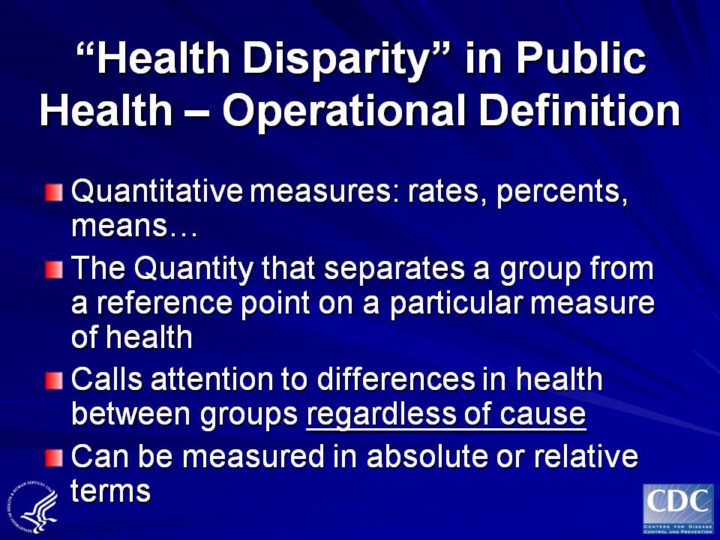| front |1 |2 |3 |4 |5 |6 |7 |8 |9 |10 |11 |12 |13 |14 |15 |16 |17 |18 |19 |20 |21 |22 |23 |24 |25 |26 |27 |28 |29 |30 |31 |32 |33 |34 |35|36 |37 |38 |39 |40 |41 |42 |43 |44 |45 |46 |47 |48 |49 |50 |51 |52 |53 |54 |55 |56 |57 |58 |review |
 |
“Health Disparity” in Public Health – Operational Definition
•Quantitative
measures: rates, percents, means…
•The
Quantity that separates a group from a reference point on a particular
measure of health
•Calls
attention to differences in health between groups
regardless of cause
•Can
be measured in absolute or relative terms
-Source: Dr. Williams’ Slide Set
Disparity and difference are synonyms in most dictionaries.
The population-based objectives in HP2010 are measured in terms of rates, percents, means, proportions, or some other quantitative measure.
In the context of public health, a disparity is the quantity that separates a group from a reference point on a particular measure of health that is expressed in terms of a rate, proportion, mean, or some other quantitative measure.
The purpose of the second goal of HP2010 is to call attention to differences in health between groups regardless of the cause….
To eliminate disparities, ultimately specific causes or determinants need to be identified.
Changes in disparity over time can be measured in absolute or relative terms. ADD notes: see pages 7-8, Keppel et al.
Source: “Slides for Judith.ppt”
|